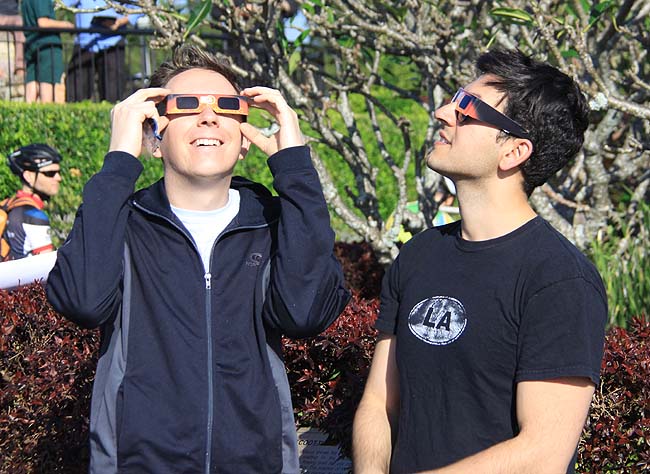How not to photograph a solar eclipse
- November 14th, 2012
- Posted in australia . Brisbane
- Write comment
I add this post with slight embarrassment, as my attempts to photograph the partial total eclipse here in Brisbane this morning at Mt Coot-tha, were hardly successful. As a journalist and documentary style photographer I don’t tend to play around a lot with equipment, light, lenses and other fancy stuff and that showed today. Still it was fun and I learnt a lot.
I bought some special paper to use as a kind of lens hood and rigged up a tube, at the shop’s suggestion (thanks Astropete at Mt Gravatt), to mount this over the camera. It wasn’t the best set up by any means, not because of what they suggested, but what I did! Light was obviously still getting into the lens and creating a kind of ghost illumination of the sun. Also my lens just wasn’t powerful enough to magnify the image and because I couldn’t get the paper completely flat it was slightly distorted.
I had a look through some of the telescopes there and they had the most beautiful images – simply spectacular.
But what I enjoyed doing was photographing other people watching the eclipse – this is of course my kind of photography anyway; getting people’s reactions, studying social movements and so on. So really my eclipse photography was about the other gazers rather than the sun!
Anyway with some fear and trepidation I post here one image of the eclipse, so you can see how badly I covered it, plus some better crowd shots. In any case enjoy, it was fabulous and I’ll definitely go to another one – better prepared next time!

Of course if you bring a big telescope and camera, the media are on to you, so at least I escaped this kind of attention.

Telescope owners were only too happy to let people look through their scopes. Thanks to the Brisbane astronomy club for the amazing views today.
To see more images of the eclipse gazers and a report on the event click here.
——————–
Feel free to email Jo at [email protected] with your comments/thoughts/photo aspirations. See and learn more at www.visitedplanet.com







No comments yet.